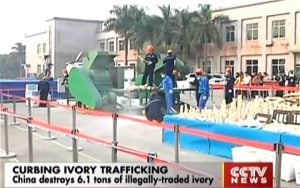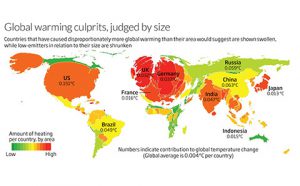By Michael J Hathaway
University of California Press, 2013.
Hathaway, associate professor of anthropology at Simon Fraser University in Vancouver, suggests that the consequences of Chinese environmentalism are created through powerful social transformations that do not necessarily originate in the West. He maintains that new scientific concepts are “not imposed on or passively diffused into China”, but that accepted wisdom gets buffeted by a multitude of unpredicted forces generated through social interactions. Ideas are compared to winds that shift direction and speed, and they can gust or squall abruptly.
“In the early twenty-first century it is now possible to see that the world is being shaped by a Chinese centered flow,” observes Hathaway. “Winds do not blow in a straight line and often push up against one another, which makes them unpredictable in their force and direction.” Through investigating how these so-called winds travel in relation to the terrain they are blowing through, Hathaway attempts to explain how “the social and natural landscape of China” gets reshaped from within. He points to the status of 56 ethnic minority communities, once denigrated as poor, backward peasants who ought to be relocated before they irreparably damage the land’s potential. Now their few sacred forests are valued for biodiversity, and seen as sanctuaries amid the burgeoning rubber plantations.
A specialist in globalisation and the politics of indigenous groups inside China, Hathaway devotes considerable space to defining and promoting his neologism as a technical term. Frankly, his idea of dubbing currents of change ‘environmental winds’, or huanjing feng, does not blow me away. At best, it is a useful metaphor for a nuanced way to track the processes and cultural influences that lead to policy changes.
Environmental Winds is aimed at academics and seems rather too scholarly to appeal to a general readership. For a casual reader, the cultural anthropology jargon is sometimes perplexing and occasionally seems culled from a series of high-toned grant proposals. But it’s not all abstract theorising. It’s worth perusing Hathaway’s extensive end notes for fascinating tidbits that emerge from his fieldwork in Xiao Long, Kunming and elsewhere in rural Yunnan. The author’s affable voice and eye for detail, also evident in his introduction, shine through here.
Revenge of the elephants
The final chapter, “On the Backs of Elephants,” is less long-winded and examines social changes triggered by elephant behaviour. “The forest is thick, the elephants are elusive, and the territory is vast”, Hathaway notes, but “elephants wander, eat crops, collide into cars and destroy houses.”
Despite a few setbacks, China’s conservation success with several hundred elephants in the wild is now considered exemplary across the Mekong region. Hathaway documents how the elephants themselves adapt to China’s social reforms and “transform larger landscapes.”
After four elephant hunters were executed in 1995 for killing a state-protected species, the government confiscated hunting rifles from villagers across Yunnan, and there was considerable fallout. The elephants became perceived as more brazen attackers and even spiteful: fatal encounters increased and, according to government statistics, at least 63 people were killed by elephants in Yunnan from 1997-2002, ten times the death rate in Southern India, where the elephant population is far denser. Some compensation schemes were initiated in 2009 by private companies and new insurance policies against damage from state-protected endangered wild animals — including leopards, tigers, boars, bears, as well as elephants — are now on offer.
The saga of China’s Wild Elephant Valley reserve started in the early 1990s, with a quest by wildlife conservationists for an emblematic mammal with as much charisma as the Giant Panda. Hathaway recounts how villagers feared raids by local elephants while fondly describing them as “naughty” or “clever”. They considered them to be more intelligent and creative than African pachyderms that could be warded off by electric fences. Yunnan farmers turned to dynamite as a deterrent. In order to raise awareness of animal welfare and increase project funding, the fledgling elephant reserve set out to attract urban Chinese and foreign tourists while local villagers were kept away with fences and fines.
But the wild Asian elephants in nearby jungles proved disinclined to come to a custom-built pond beneath a viewing treehouse, designed by a New Zealand “nature tourism” consultant hired by the World Wide Fund for Nature.
Attempts to lure wild elephants across the border from Laos by spreading salt along Chinese riverbanks had mixed results. Neighbouring Thailand had banned logging upcountry after a devastating flood in 1989, so elephants were no longer earning their keep for logging companies. The ultimate solution was to truck in some domesticated Thai elephants and their trainers to the Chinese park in order to get the project going. Tourists soon flocked to see shows of trained Thai elephants dancing and playing basketball at Wild Elephant Valley in China. According to Hathaway, with less fear of stampeding beasts and a growing respect for elephantine abilities and balance, attitudes changed. Authorities could count on wider cooperation for their task of protecting the wild Asian elephants.
Decades later, a new cross-border elephant alley links Laos to China, and now wild elephants inhabit the rainforested hills in greater numbers. One report estimated an increase of 50%. Hathaway points to the diplomacy required to open borders for the elephants and suggests that “these animals are inspiring new forms of transnational negotiation.”
He concludes: “People and elephants are the two most powerful landscape-changing animals in southern China; they are social, clever and wilful and part of moral and legal hierarchies. Elephants are neither domesticated animals nor wild beasts. Their lives are far more intertwined with ours than is often imagined, and they are becoming different in the process.”






